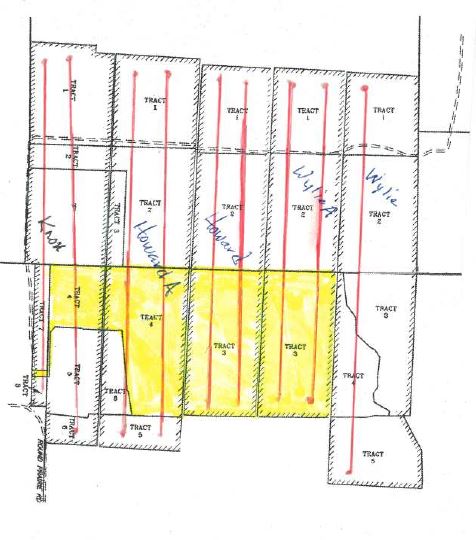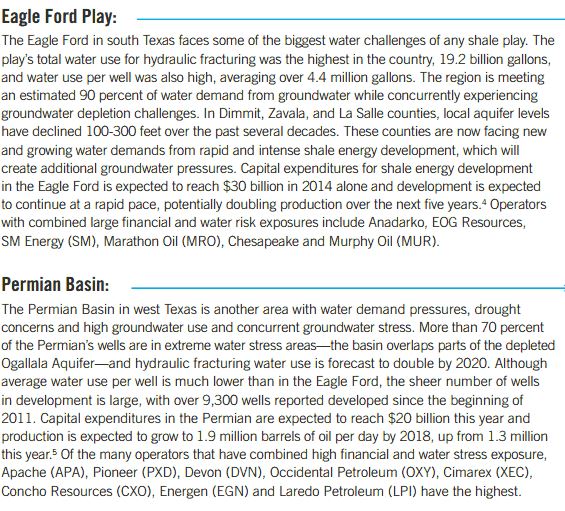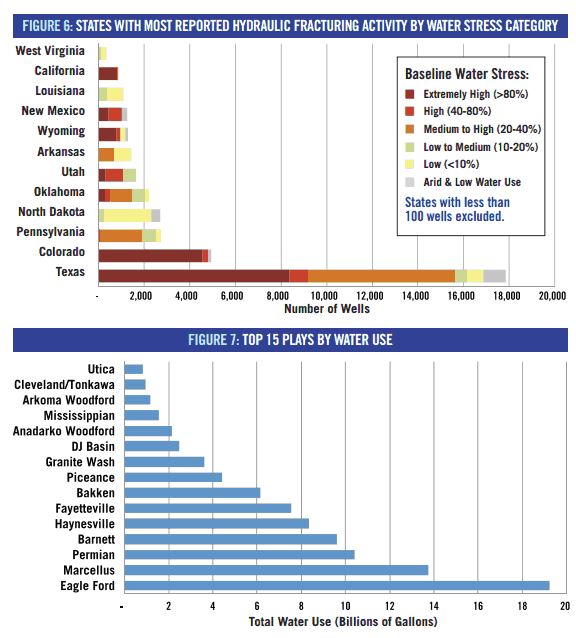I recently ran across this very good article on the tax treatment of payments received for granting of pipeline easements:
http://www.aicpa.org/Publications/TaxAdviser/2014/march/Pages/Kebodeaux_mar2014.aspx
I recently ran across this very good article on the tax treatment of payments received for granting of pipeline easements:
http://www.aicpa.org/Publications/TaxAdviser/2014/march/Pages/Kebodeaux_mar2014.aspx
National Geographic has started a website called The Great Energy Challenge that provides a wealth of information about energy and the environment. “The Great Energy Challenge convenes and engages influential citizens and key energy stakeholders in solutions-based thinking and dialogue about our shared energy future.” Multiple articles from distinguished scientists provide education, explore innovative technologies, and seek to engage the public in a meaningful way about our energy future. Its home page is here.
Here is a good article discussing five innovative technologies for cleaner shale energy production and transportation, including water-free fracing, using recycled water or brackish water for fracing, using natural gas instead of diesel fuel to power drilling and completion, and efforts to reduce methane emissions in exploration, production and transportation of natural gas.
Here is a quiz to see how much you know about water and energy. Did you know that it takes 2.8 to 6.6 gallons of water to refine one gallon of gasoline? That it takes 780 gallons of water to produce one gallon or corn ethanol?
The San Antonio Business Journal has a good website aggregating news about the Eagle Ford Shale: http://www.bizjournals.com/sanantonio/blog/eagle-ford-shale-insight/
I recently have learned of a suit brought by landowners against EOG Resources involving “allocation wells,” of which I have written before. The case is Spartan Texas Six Capital Partners, Ltd., Spartan Texas Six-Celina, Ltd., and Dion Menser v. EOG Resources, Inc., Cause No. 2011-27476, in the 11th Judicial District Court of Harris County. Although the case is in Harris County, it involves wells drilled by EOG in Montague County. The EOG wells are shown on the sketch below; the plaintiffs’ tract is in yellow:

EOG filed pooled unit designations for the Knox, Howard, Howard A, and Wylie A units, even though the plaintiffs’ leases did not allow pooling. EOG then calculated the plaintiffs’ royalties based on the portion of each well’s lateral length located on plaintiffs’ tract – allocation based on lateral length. I understand that most companies drilling allocation wells calculate royalties owed on non-pooled tracts on this lateral-length yardstick.
I have reviewed some of the pleadings in the Spartan case, including a motion for partial summary judgment filed by EOG last month. EOG asks the court to rule that “royalties in this case should be based on a reasonable allocation of the total production attributable to the lands covered by the [plaintiffs’] leases,” citing Browning Oil Company, Inc. v. Luecke, 38 S.W.3d 625 (Tex.App.-Austin 2000, pet. denied).
Last week, the Fourth Court of Appeals in San Antonio issued its opinion in Chesapeake v. Hyder.pdf, on gas royalties owed to the Hyder family for production in Johnson and Tarrant Counties, in the Barnett Shale. The court upheld a judgment against Chesapeake for more than a million dollars, including $250,000 in attorneys’ fees. The result is not surprising considering the language in the lease, but the case is interesting because it reveals Chesapeake’s structure for marketing of gas in the Barnett Shale, obviously designed to reduce its gas royalty obligations.
The principal issue on appeal was whether Chesapeake could reduce the Hyders’ royalty by the amount of transportation costs paid by Chesapeake to unrelated pipeline companies. The trial court and court of appeals held that it could not. As I have written before (here, here and here), deductibility of post-production costs is a continuing issue for gas royalty payments in Texas. Prior Supreme Court cases have held that such costs are deductible under most standard gas royalty clauses.
The Hyders’ royalty clause was not a standard lessee-form lease. It provided:
Ceres, a nonprofit focusing on climate change, water scarcity and sustainability, has issued a report, Hydraulic Fracturing & Water Stress: Water Demand by the Numbers, a Shareholder, Lender & Operator Guide to Water Sourcing. Here are some excerpts:

________________________________________________________________________________

________________________________________________________________________________________
As drilling activity in the onshore US continues to grow, more and more attention is being paid to the environmental effects of exploration and production. Media stories abound about groundwater contamination, the demand for fresh water from hydraulic fracturing, increased air emissions from exploration and production, controversy over pipeline condemnation and construction, earthquakes linked to wastewater injection, increased traffic and accidents, and effects on endangered species. Recent examples:
Air Emissions
This week The Center for Public Integrity, InsideClimate News and The Weather Channel released a report, Big Oil, Bad Air, on the effects of drilling in the Eagle Ford Shale on air quality in South Texas. The report is highly critical of the lack of regulation by the Texas Commission of Environmental Quality (TCEQ) of emissions from oil and gas exploration and production operations in that region. Criticism of the report has already hit the media. Here is an industry response to the report from Energy in Depth, a website sponsored by industry. The TCEQ says it plans to conduct video surveillance of air quality over the region this summer.
The Eagle Ford in South Texas is big news, even in California.
http://www.latimes.com/nation/la-na-texas-oil-boom-20140216,0,7621618.story#axzz2tdDZOvWY
In the later chapters of The Quest, Daniel Yergin summarizes the history of the internal combustion engine. He begins by recounting a meeting of Henry Ford and Thomas Edison at a convention in August 1896, at which they sat together. Ford had just built his first gasoline-powered “quadricycle.” He sketched out his design to Edison. Edison told him that the problem with electric-powered vehicles is that they “must keep near a power station.” Edison told Ford to stick with the internal combustion engine.
The internal combustion engine was invented by Nikolaus Otto. His “Otto cycle” engine, developed in 1876, is still recognizable in our engines today: valves, a crankshaft, spark plugs, and a single cylinder. Otto teamed with Karl Benz to produce automobiles, and Gottlieb Daimler was in close competition. (In the twentieth century, the two companies merged, though Benz and Daimler never met each other.) By the 1890’s Daimler was distributing his cars in America.
Germany competed with France — with the French engineers Armand Peugeot and Louis Renault — for supremacy in the development of the automobile. Britain was initially left behind because its railway industry, fearing competition, got Parliament to pass the Red Flag Acts that limited “road locomotives” to four miles an hour in the country and two miles an hour in cities — as well as requiring a man carrying a red flag to walk in front of road vehicles hauling multiple wagons.
Julia Trigg-Crawford, a landowner in Lamar County, has asked the Texas Supreme Court to hear her case arguing that TransCanada has no right to condemn her property for the Keystone XL Pipeline. The Crawford Family Farm Partnership v. TransCanada Keystone Pipeline, L.P., No. 13-0866. Although other segments of the pipeline await federal approval, the segment from Oklahoma across Texas has now been completed and is in operation. Crawford lost her case in the trial court and the Texarkana Court of Appeals, 409 S.W.3d 908, and has asked the Supreme Court to review the case. The Supreme Court asked TransCanada to reply to Crawford’s petition, and Texarkana filed its reply on February 6.
Crawford’s argument is that Texas law does not grant eminent domain powers to interstate pipelines. TransCanada argues that Crawford’s appeal presents the same issues as Rhinoceros Ventures Group, Inc. v. TransCanada Keystone Pipeline, L.P., 388 S.W.3d 305 (Tex. App.–Beaumont 2012, pet. denied), which the Supreme Court declined to review.
Crawford has become a symbol of opposition to the Keystone pipeline, drawing national attention to her cause.